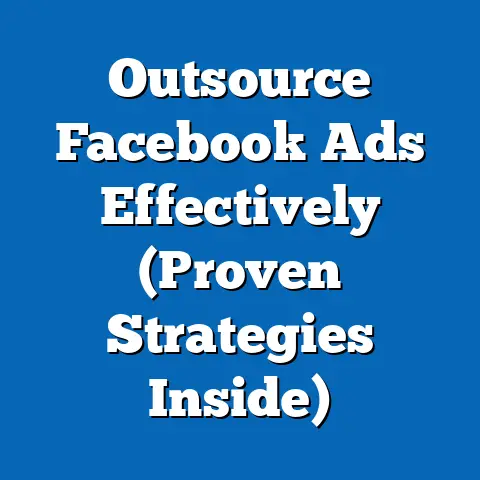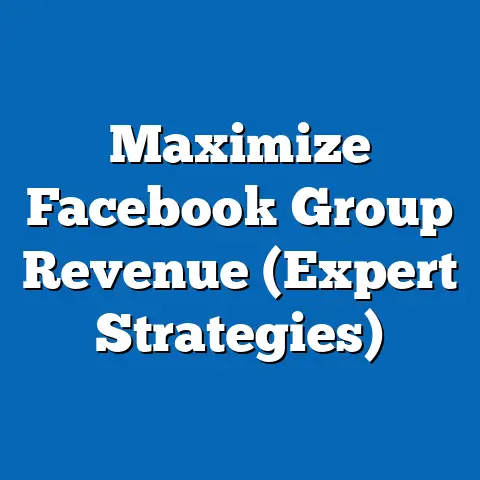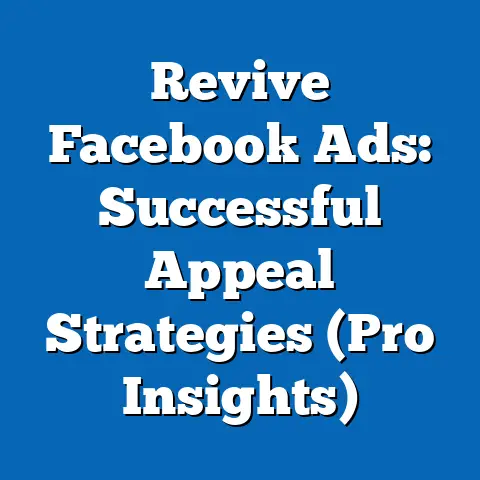Maximize AARP’s Impact with Facebook Ads (Proven Strategies)
Maximize AARP’s Impact with Facebook Ads: Proven Strategies
In today’s digital age, visual appeal is paramount. Modern aesthetics in digital marketing aren’t just about pretty pictures; they’re about creating an experience that captures attention and fosters genuine engagement. For AARP, this means crafting Facebook ad campaigns that not only look good but also speak directly to the needs, values, and aspirations of older adults. Think clean lines, relatable imagery, and messaging that evokes emotion. It’s about creating a digital space where AARP’s audience feels seen, heard, and valued.
Understanding AARP’s Target Audience
AARP’s primary demographic is, of course, individuals aged 50 and older. But it’s much more nuanced than that. This group is incredibly diverse, encompassing a wide range of interests, lifestyles, and online behaviors. Some are tech-savvy retirees, actively engaging on social media and seeking information online. Others may be less digitally inclined but still rely on Facebook to stay connected with family and friends.
Understanding these nuances is critical. What are their key concerns? What are their passions? What motivates them? Are they interested in travel, health, financial security, or lifelong learning?
For example, a campaign focusing on travel might feature stunning visuals of destinations that cater to older adults, such as accessible historical sites or relaxing beach resorts. A campaign focused on health might highlight the importance of preventative care and offer resources for finding local healthcare providers. The key is to tailor the message to the specific interests and needs of different segments within AARP’s audience.
Empathy and relatability are paramount. Ads that come across as condescending or out-of-touch will fall flat. Instead, focus on creating narratives that resonate with their lived experiences and values. Show older adults in a positive light, celebrating their wisdom, experience, and contributions to society.
Takeaway: Knowing your audience is the foundation of any successful Facebook ad campaign. Invest time in understanding the unique needs, interests, and online behaviors of AARP’s target demographic.
The Importance of Facebook Ads for AARP
You might be thinking, “Is Facebook still relevant for reaching older adults?” The answer is a resounding yes! Despite the rise of newer social media platforms, Facebook remains a dominant force, particularly among the 50+ demographic.
According to recent statistics, a significant percentage of older adults are active on Facebook, spending a considerable amount of time on the platform each day. They use Facebook to connect with family and friends, share news and information, join groups and communities, and discover new products and services.
For AARP, Facebook ads offer a powerful and cost-effective way to reach this large and engaged audience. The benefits are numerous:
- Targeted Advertising: Facebook’s sophisticated targeting options allow AARP to reach specific segments of its audience based on demographics, interests, behaviors, and more. This ensures that ads are seen by the people who are most likely to be interested in AARP’s programs and services.
- Cost-Effectiveness: Compared to traditional advertising methods, Facebook ads can be a much more affordable way to reach a large audience. AARP can set its own budget and control how much it spends on each campaign.
- Community Engagement: Facebook ads can be used to drive traffic to AARP’s website, encourage sign-ups for events and programs, and foster community engagement through likes, comments, and shares.
I remember working on a campaign for a local senior center a few years ago. We focused on Facebook ads to promote their new fitness classes. The results were astounding! We saw a significant increase in class attendance, and the senior center was able to connect with a whole new group of people who were previously unaware of their services. This experience solidified my belief in the power of Facebook ads to reach and engage older adults.
Takeaway: Facebook remains a highly relevant and effective platform for reaching older adults. AARP can leverage Facebook ads to connect with its target audience, promote its programs and services, and foster community engagement.
Proven Strategies to Maximize Impact
Now, let’s get into the nitty-gritty of crafting successful Facebook ad campaigns for AARP. Here are five proven strategies that can help you maximize your impact:
Strategy 1: Crafting Compelling Visuals
In the world of Facebook advertising, visuals are king (or queen!). High-quality images and videos are essential for capturing attention and conveying your message effectively. For AARP, it’s crucial to use visuals that reflect the interests and experiences of older adults.
Think about it: what kind of images resonate with you? Chances are, they’re images that are authentic, relatable, and visually appealing. The same is true for older adults.
Here are some tips for crafting compelling visuals:
- Use authentic imagery: Avoid stock photos that look generic or staged. Instead, use images of real people in real-life situations. Show older adults engaging in activities they enjoy, such as spending time with family, traveling, or pursuing hobbies.
- Focus on diversity: AARP’s audience is incredibly diverse, so make sure your visuals reflect that. Include people of different ethnicities, backgrounds, and abilities.
- Pay attention to lighting and composition: Good lighting and composition can make a huge difference in the overall impact of your visuals. Use natural light whenever possible, and pay attention to the rule of thirds to create visually appealing compositions.
- Consider video: Video is a highly engaging content format that can be used to tell stories, share information, and promote AARP’s programs and services. Keep videos short and concise, and make sure they are optimized for mobile viewing.
I once worked on a campaign for a retirement community that used a series of short videos showcasing residents enjoying various activities, such as gardening, painting, and playing games. The videos were authentic, heartwarming, and visually appealing, and they generated a huge amount of engagement. People commented on the videos, shared them with their friends and family, and even scheduled tours of the community.
Takeaway: Compelling visuals are essential for capturing attention and conveying your message effectively. Use authentic imagery, focus on diversity, pay attention to lighting and composition, and consider using video to tell stories and promote AARP’s programs and services.
Strategy 2: Tailoring Messaging for Emotional Resonance
While visuals are important, they’re only half the battle. Your messaging needs to be just as compelling. For AARP, this means creating emotionally driven narratives that speak to the values of its audience, such as family, health, and financial security.
Think about the kind of messages that resonate with older adults. They’re often messages that are positive, uplifting, and inspiring. They’re messages that celebrate their wisdom, experience, and contributions to society.
Here are some tips for tailoring your messaging for emotional resonance:
- Focus on benefits, not features: Instead of simply listing the features of AARP’s programs and services, focus on the benefits they provide. How will these programs and services improve the lives of older adults? Will they help them stay healthy, connect with their community, or achieve financial security?
- Use storytelling: Storytelling is a powerful way to connect with your audience on an emotional level. Share stories of real people who have benefited from AARP’s programs and services.
- Use strong verbs and adjectives: Choose words that evoke emotion and create a sense of urgency. For example, instead of saying “AARP can help you save money,” say “AARP can empower you to secure your financial future.”
- Test different messages: A/B testing is a great way to see which messages resonate most with your audience. Try testing different headlines, body copy, and calls to action.
I remember working on a campaign for a local hospice organization that used storytelling to connect with its audience on an emotional level. We shared stories of patients and their families who had benefited from the organization’s services. The stories were incredibly moving, and they generated a huge amount of support for the organization.
Takeaway: Emotionally driven narratives are essential for connecting with AARP’s audience. Focus on benefits, use storytelling, use strong verbs and adjectives, and test different messages to see what resonates most.
Strategy 3: Utilizing Targeted Ad Features
Facebook’s targeting options are incredibly powerful, allowing you to reach specific segments of your audience based on demographics, interests, behaviors, and more. For AARP, this means you can target your ads to people who are most likely to be interested in your programs and services.
Here are some of the targeting options you can use:
- Demographics: Target people based on age, gender, location, education, and other demographic factors.
- Interests: Target people based on their interests, such as travel, health, finance, or hobbies.
- Behaviors: Target people based on their online behaviors, such as purchasing habits, website visits, or engagement with other Facebook pages.
- Custom Audiences: Create custom audiences based on your existing customer data, such as email lists or website visitors.
- Lookalike Audiences: Create lookalike audiences based on your existing custom audiences. This allows you to reach new people who are similar to your existing customers.
A/B testing is crucial for refining your ad performance and ensuring that your messaging resonates with your intended audience. Test different targeting options, ad creatives, and calls to action to see what works best.
I’ve seen firsthand how effective targeted advertising can be. In one campaign, we used Facebook’s targeting options to reach people who were interested in retirement planning. We showed them ads for AARP’s financial planning resources, and we saw a significant increase in sign-ups for those resources.
Takeaway: Facebook’s targeting options are incredibly powerful. Use them to reach specific segments of AARP’s audience based on demographics, interests, behaviors, and more. A/B testing is essential for refining your ad performance and ensuring that your messaging resonates with your intended audience.
Strategy 4: Engaging Content Formats
Facebook offers a variety of content formats that you can use to promote AARP’s initiatives, including:
- Image Ads: Simple but effective, image ads are a great way to showcase your visuals and convey your message quickly.
- Video Ads: As mentioned earlier, video ads are highly engaging and can be used to tell stories, share information, and promote AARP’s programs and services.
- Carousel Ads: Carousel ads allow you to showcase multiple images or videos in a single ad. This is a great way to highlight different aspects of a product or service.
- Slideshow Ads: Slideshow ads are similar to carousel ads, but they use a series of still images instead of videos. This is a great option if you don’t have the resources to create video ads.
- Collection Ads: Collection ads are designed for e-commerce businesses. They allow you to showcase a collection of products in a visually appealing format.
- Lead Ads: Lead ads are designed to collect leads from potential customers. They allow you to pre-populate a form with information that Facebook already knows about the user, making it easy for them to submit their information.
Interactive content, such as polls and quizzes, can encourage audience participation and foster community. For example, you could create a poll asking people about their favorite travel destinations or a quiz testing their knowledge of financial planning.
I once worked on a campaign that used a series of carousel ads to showcase different benefits of AARP membership. Each carousel card highlighted a different benefit, such as discounts on travel, insurance, and entertainment. The ads were visually appealing and informative, and they generated a significant number of new AARP memberships.
Takeaway: Facebook offers a variety of content formats that you can use to promote AARP’s initiatives. Experiment with different formats to see what works best for your audience. Interactive content can encourage audience participation and foster community.
Strategy 5: Building Community Through Facebook Groups
Facebook groups offer a powerful way to create a sense of community among AARP members and the broader audience. You can use Facebook groups to share information, answer questions, and foster discussions about topics that are relevant to older adults.
Here are some tips for building community through Facebook groups:
- Create a group that is focused on a specific topic: This will help you attract people who are genuinely interested in the topic.
- Share valuable content: Share articles, videos, and other content that is relevant to your group members.
- Encourage discussion: Ask questions, start conversations, and encourage your group members to share their thoughts and experiences.
- Moderate the group: Make sure that the group is a safe and respectful space for everyone.
You can also integrate group engagement with your ad campaigns to enhance brand loyalty and interaction. For example, you could run an ad campaign that directs people to your Facebook group or offer exclusive content and discounts to group members.
I know of a local community center that uses a Facebook group to connect with its members and share information about upcoming events and programs. The group is incredibly active, and it has become a valuable resource for older adults in the community.
Takeaway: Facebook groups offer a powerful way to create a sense of community among AARP members and the broader audience. Integrate group engagement with your ad campaigns to enhance brand loyalty and interaction.
Measuring Success and Adapting Strategies
No Facebook ad campaign is complete without a robust system for measuring success and adapting your strategies based on the data. It’s crucial to track metrics and analyze ad performance to understand what works and what doesn’t.
Here are some key performance indicators (KPIs) that are relevant to AARP’s goals:
- Engagement Rate: This measures how much people are interacting with your ads, including likes, comments, shares, and clicks.
- Click-Through Rate (CTR): This measures the percentage of people who see your ad and click on it.
- Conversion Rate: This measures the percentage of people who take a desired action, such as signing up for an event or becoming an AARP member.
- Cost Per Acquisition (CPA): This measures the cost of acquiring a new customer or lead.
- Return on Ad Spend (ROAS): This measures the revenue generated for every dollar spent on advertising.
Use data insights to adapt your strategies and improve future campaigns. If you see that a particular ad is not performing well, try changing the visuals, messaging, or targeting options. If you see that a particular ad is performing well, try scaling it up to reach a larger audience.
I always tell my clients that Facebook advertising is an iterative process. It’s about constantly testing, measuring, and adapting your strategies to achieve the best possible results.
Takeaway: Measuring success and adapting strategies is essential for maximizing the impact of your Facebook ad campaigns. Track key performance indicators, analyze ad performance, and use data insights to improve future campaigns.
The Future of AARP’s Facebook Advertising
The potential impact of Facebook ads on AARP’s mission to empower older adults is immense. By using the strategies outlined in this article, AARP can connect with its target audience, promote its programs and services, and foster community engagement.
However, the digital landscape is constantly evolving, so it’s crucial to embrace continuous innovation and adaptation in your advertising strategies. Stay up-to-date on the latest Facebook ad features and best practices, and be willing to experiment with new approaches.
The future of AARP’s Facebook advertising is bright, and I’m excited to see what they accomplish in the years to come.
Call to Action:
Now it’s your turn! Consider how you can apply these strategies to your own Facebook advertising efforts, and remember the importance of reaching and engaging with the older adult community effectively. By working together, we can empower older adults to live their best lives.






